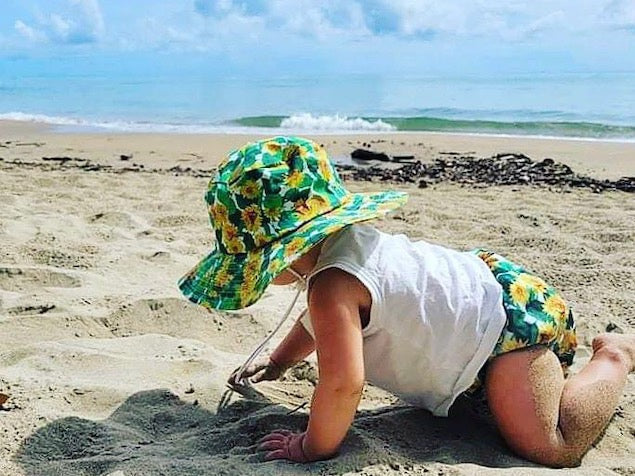A guide for all parents in understanding the cloth nappy acronyms and jargon. This list will help you understand the difference between different reuseable nappy products and the benefits of different materials and designs.
Cloth nappies can be a little confusing for new parents, especially with all the different terms and jargon used in the cloth nappy world. Here is a guide to help you navigate some cloth nappy jargon:
- All-in-One (AIO): A type of reuseable cloth nappy where the absorbent layer is sewn into the diaper cover. This means that it is a one-piece system, making it easy to use.
- All-in-Two (AI2): A style of cloth nappy where the absorbent layer snaps into the waterproof cover. This means that the absorbent layer can be removed and replaced, making it more cost-effective.
- Pocket: A type of cloth nappy where there is a pocket between the outer layer and the inner layer. The absorbent layer is placed into the pocket, and it can be removed and replaced.
- Fitted: A type of cloth nappy that fully absorbent with no waterproof layer. It requires a separate waterproof cover.
- Prefold: A flat cloth diaper that has been folded and sewn to create extra layers in the middle. They are a type of insert you would place in a waterproof cover.
- Flats: A single layer of cloth that needs to be folded before use. They require a separate waterproof cover. This often refers to the same style as the old terry flat nappies your parents or grandparents used.
- Snappi: A fastener used to secure a prefold or flat diaper in place instead of using pins.
- Liner: A thin layer of material (usually made of microfleece to be reuseable or bamboo viscose to be disposable) that sits between the baby's skin and the nappy, to help keep the nappy cleaner and to protect the baby's skin.
- Booster: An additional absorbent layer/insert that can be added to a cloth nappy for extra absorbency.
- Nappy Cover/Wrap: A waterproof cover that is used over a fitted, prefold, or flat nappy to prevent leaks.
- Wet Bag: A reuseable fabric bag used to store a range of items including cloth nappies until they can be washed. It has a lining to contain moisture and smells. They come in a range of sizes and styles and can be used to replace plastic bags, snap lock bags or even containers to store items.
- Stripping: The process of removing buildup and residue from cloth nappies, often done when they start to smell or lose absorbency. This is a washing term.
- Cloth Wipes: Reusable cloth wipes that can be washed and reused. These are used instead of disposable wipes for nappy changes or cleaning up after meals.
- Wool Cover: A type of nappy cover made from wool that is breathable and absorbent. It is usually soaked in lanolin to make it waterproof.
- PUL: Polyurethane laminate is a waterproof material commonly used in cloth nappy covers.
- Minky: A fluffy velour/velvet like fabric with a short pile that is used on nappy covers or in accessories.
- Microfiber: An absorbent material often used in inserts or boosters. It is a synthetic fabric known for fast absorbency, but can also be associated with leaks from compression in the nappy.
- Bamboo: A natural absorbent material often used in inserts or boosters. It is very good at absorbing and holding onto liquid.
- Hemp: A natural absorbent material often used in inserts or boosters.
- Organic: Refers to cloth nappies made from organic materials, such as organic cotton or bamboo.
- One Size Fits All (OSFA) or One Size Fits Most (OSFM): A cloth nappy that is designed to fit babies of all sizes, usually adjustable with snaps or velcro. They grow with babies from birth until toilet training. These nappies generally fit from 3.5 to 16/17kg but there can be a smaller or larger size range depending on the design.
- Snaps: These are the poppers used to secure the cloth nappy or adjust the rise. Inserts often also have snaps to secure them to the cover.
These are just some of the most common cloth nappy jargon used. Hopefully, this guide will help you understand the different types of cloth nappies and accessories available and make it easier for you to choose the right one for your baby.

